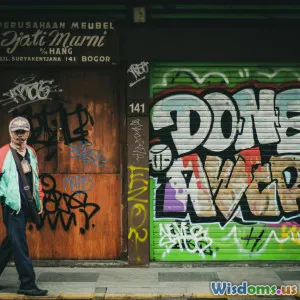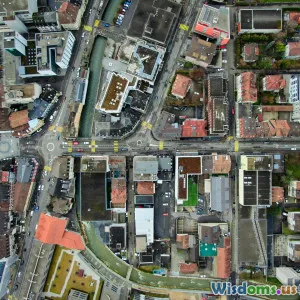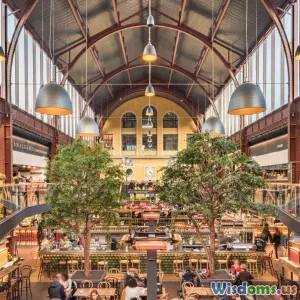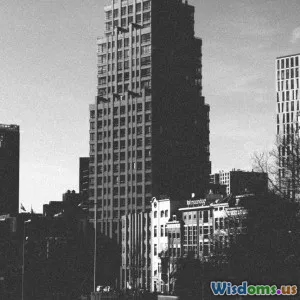
The Role of Art in Public Spaces
7 min read Explore how art transforms public spaces, enriching communities and shaping urban identity through creativity and design. (0 Reviews)
The Role of Art in Public Spaces
Public spaces are the living rooms of cities; they invite connection, inspire creativity, and define the communal identity. But beyond sidewalks and parks, public spaces have become dynamic canvases where art imbues powerful meanings and enhances urban life. This article explores the vital role of art in public spaces, uncovering its interplay with architecture and urban design, and showcasing how it influences community building, social engagement, and city aesthetics.
Introduction: Art as the Soul of Public Spaces
Picture walking through Times Square in New York or the Olympic Sculpture Park in Seattle. What strikes you isn't just the skyscrapers or the infrastructure—it's the pulse of creativity conveyed through sculptures, murals, installations, and performances. Art in public spaces does more than decorate; it anchors identity, provokes thought, and facilitates inclusive environments.
From grand monuments to subtle interventions, art suits the collective need of a society for expression and connection. But how exactly does art function within these shared spaces?
Art and Urban Identity: Crafting a City's Unique Voice
Cities leverage public art to mirror their histories, cultures, and aspirations. This is an act of narrative-building, where communities manifest their identities through visible and tangible media.
Case Study: Chicago’s Millennium Park
Millennium Park stands as a flagship success of art enhancing an urban area. The iconic "Cloud Gate" (aka "The Bean") by Anish Kapoor is not just a mirror to the city skyline—it is a symbol, instantly recognizable worldwide. This sculpture encourages interaction; visitors can touch the reflective surface and see themselves within the space, thus enmeshing individual experience with collective identity.
By integrating art into public infrastructure, Chicago transformed underused land into a vibrant cultural hub, benefitting both residents and tourists. A 2015 study indicated that Millennium Park attracts over 25 million visitors annually, revitalizing local economies.
Enhancing Public Space Design Through Art
Art is increasingly a deliberate component of urban design, working alongside architecture and landscape to heighten spatial experience.
Artistic Integration in Functional Structures
Art moves beyond sculptures; functional elements like benches, lighting fixtures, and even pavements join with artistic vision. For instance, in Buenos Aires, "Living Walls" initiative integrates murals that educate and beautify simultaneously, merging artistic expression with environmental awareness.
The Sydney Opera House’s sails are an emblematic blend of architecture and public art—a design deserving political debate and artistic acclaim alike, proving that art can engage users on multiple sensory levels.
Furthermore, cities like Barcelona foster street-level engagement through projects like "Superblocks," where design encourages pedestrianization supplemented by public art installations, redesigning the urban fabric to prioritize community well-being.
Fostering Social Engagement and Inclusivity
Art in public spaces is a catalyst for social interaction and inclusivity, breaking socioeconomic and cultural barriers.
Public Art as Dialogue
Interactive artworks invite viewers into a communal dialogue. For example, the AIDS Memorial Quilt displayed in public awaken empathy and awareness around public health issues, transforming grieving into collective remembrance.
In Minneapolis, the Rondo Community Outreach Coalition uses murals in the historically significant Rondo neighborhood to celebrate African American heritage and stimulate conversations around racial justice and reconciliation.
Public art workshops and participatory design processes give residents agency, often leading to projects that reflect diverse perspectives, encouraging stewardship of shared places.
Economic and Environmental Benefits
Investing in public art carries measurable economic and environmental benefits. According to Americans for the Arts, every $1 invested in public art can generate up to $4 in economic return through tourism, increased property values, and local business patronage.
Environmentally, art encourages sustainable urban practices—many installations use recycled or eco-friendly materials or promote green behavior.
Example: The Rotterdam Floating Forest
This innovative project showcases ecological urban design combined with public art. A floating patch of greenery attached to the waterfront, it purifies water and offers a tranquil green space amid urban hustle.
Challenges and Considerations
Despite its benefits, art in public spaces faces challenges such as maintenance costs, public controversy over themes, and balancing artistic freedom with community standards.
Cities need comprehensive planning and funding mechanisms to sustain quality and ensure that art remains accessible and relevant.
Moreover, fostering communities' involvement from the conceptual stage helps mitigate conflicts and enrich the project's resonance.
Conclusion: Building Cities with Art at Their Hearts
Art is indispensable in public spaces—not just as decoration but as a force shaping urban culture, enhancing social cohesion, and enriching visual experience. By integrating art thoughtfully within architecture and urban design, cities worldwide create meaningful environments where communities thrive.
As urban populations rise and cities evolve, ensuring that art remains a core component of public spaces is critical. It allows us to reclaim, reinterpret, and reimagine how we connect with our surroundings and each other—transforming concrete and steel into vibrant, living stories.
Public art invites us all not just to walk through cities but to experience them with renewed curiosity and empathy.
“Cities have the capability of providing something for everybody, only because, and only when, they are created by everybody.” – Jane Jacobs
Rate the Post
User Reviews
Popular Posts





















